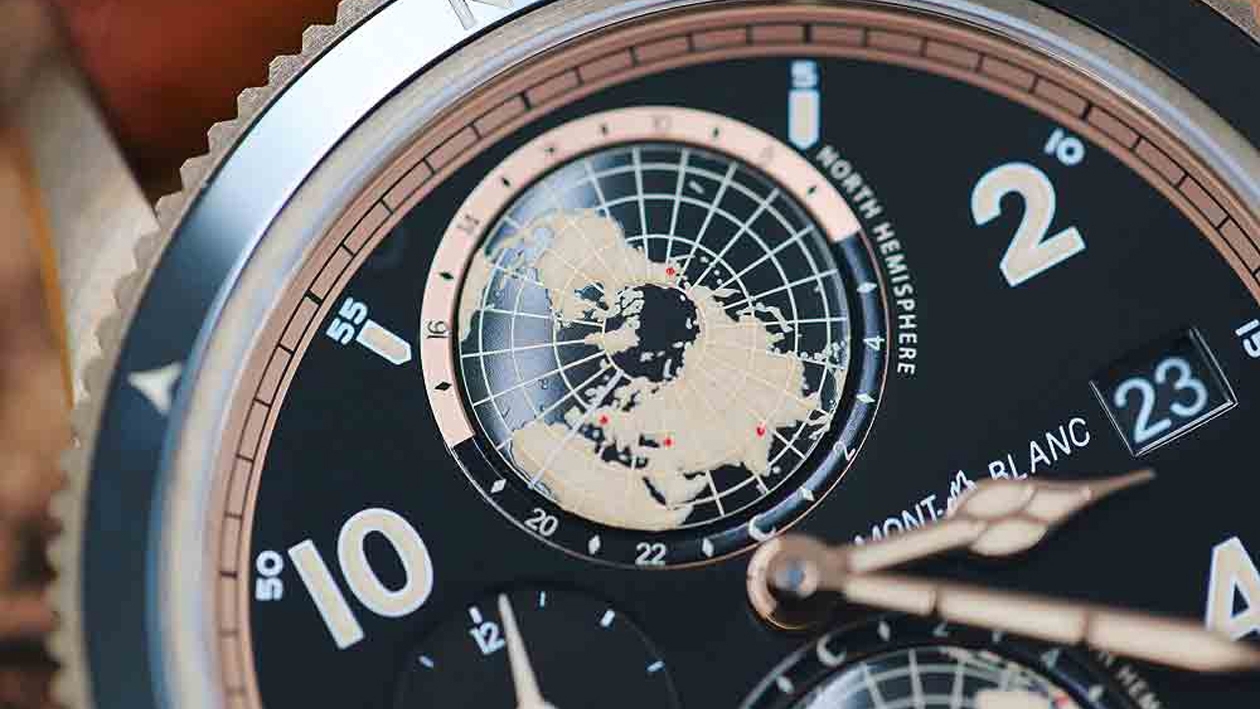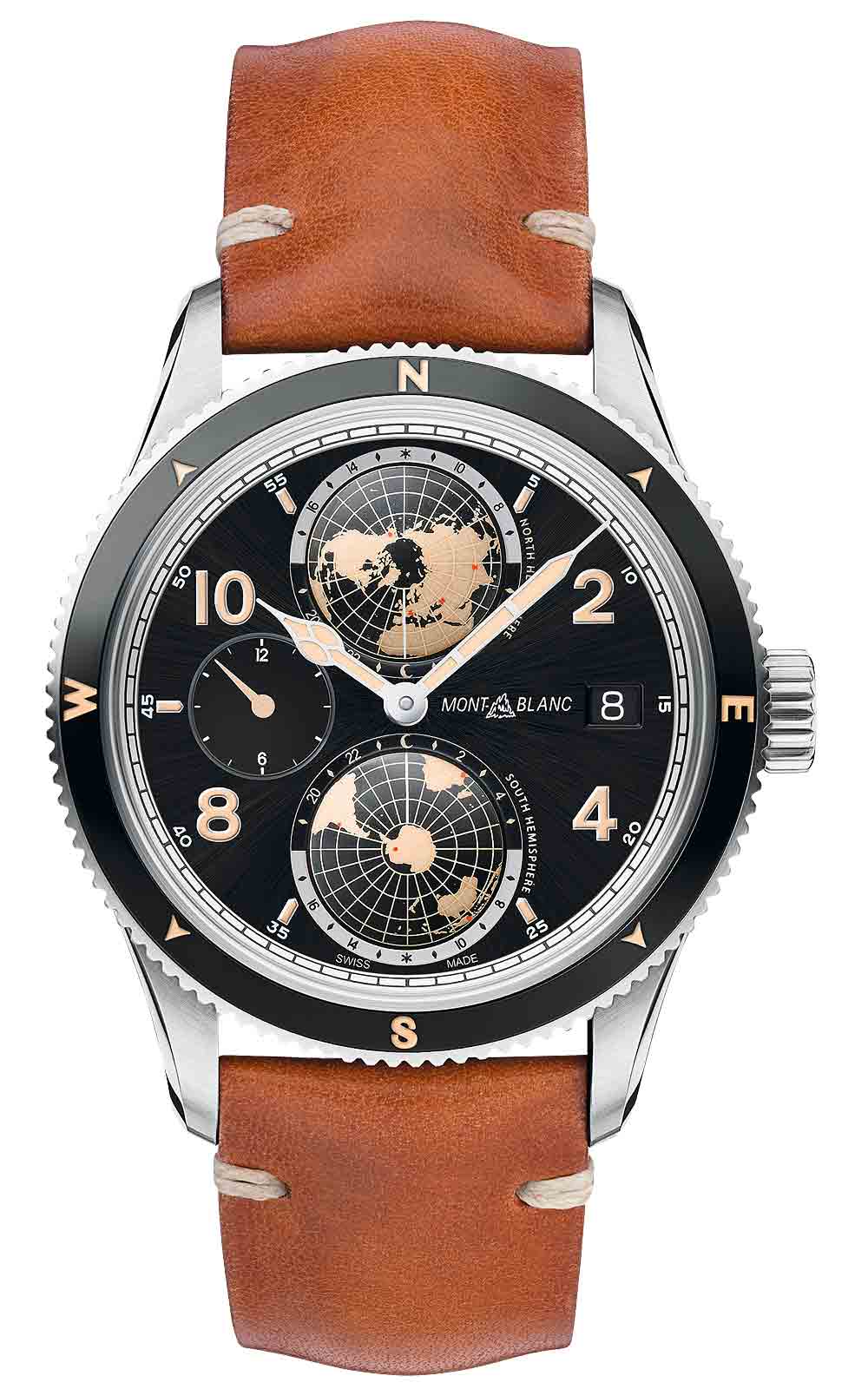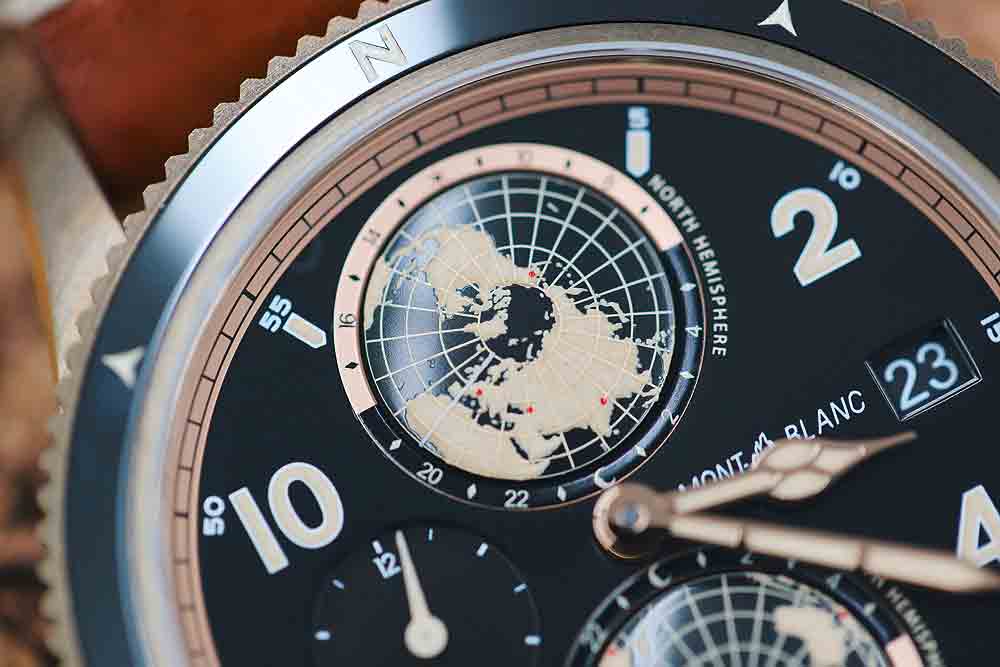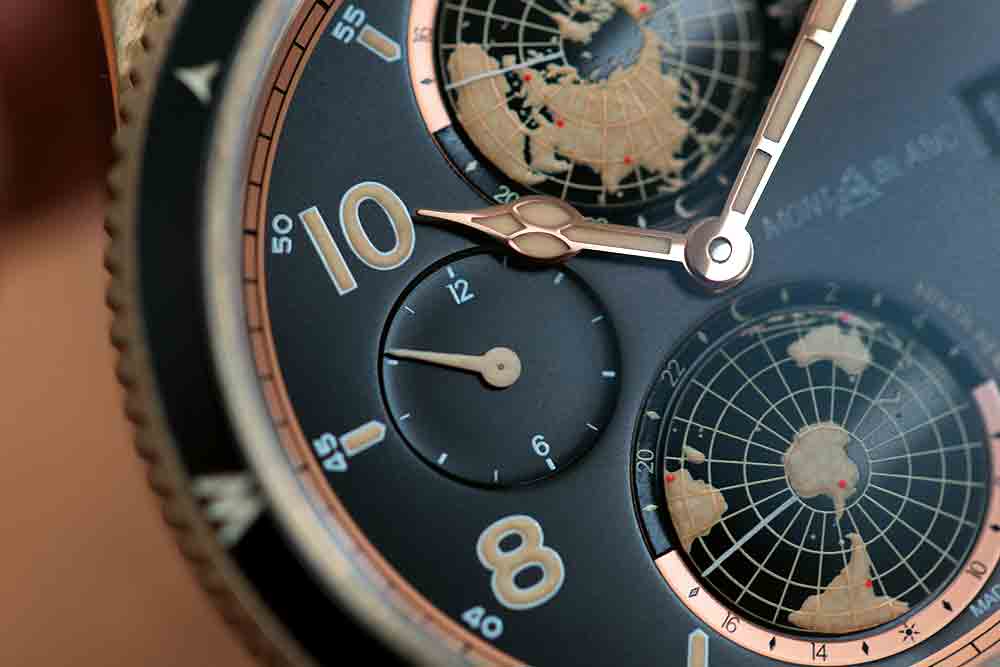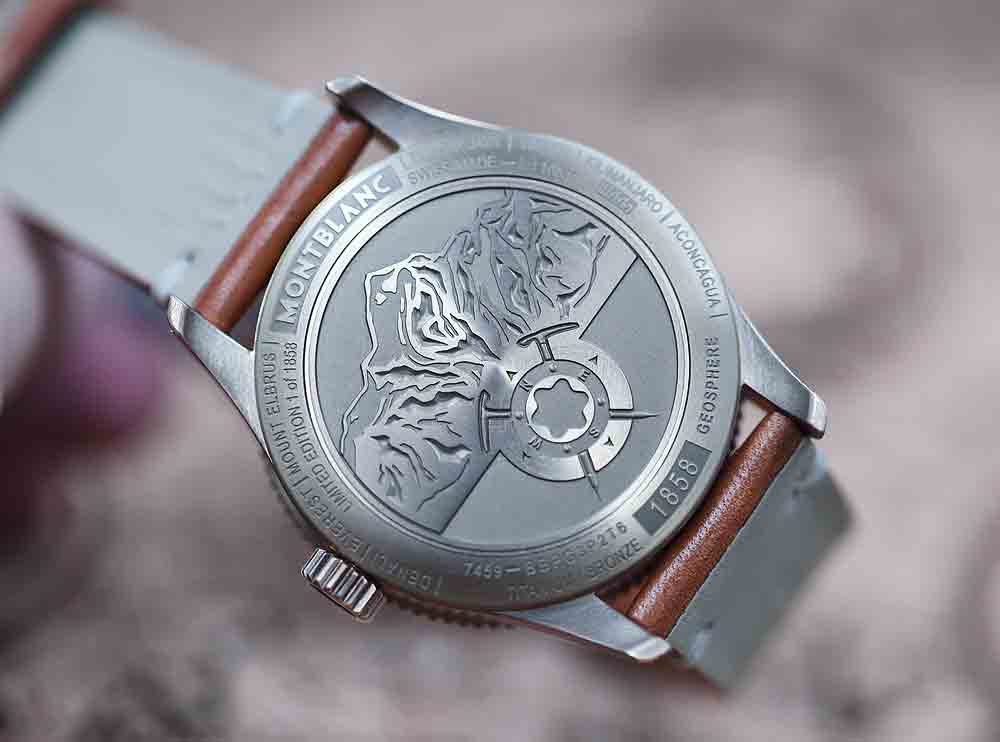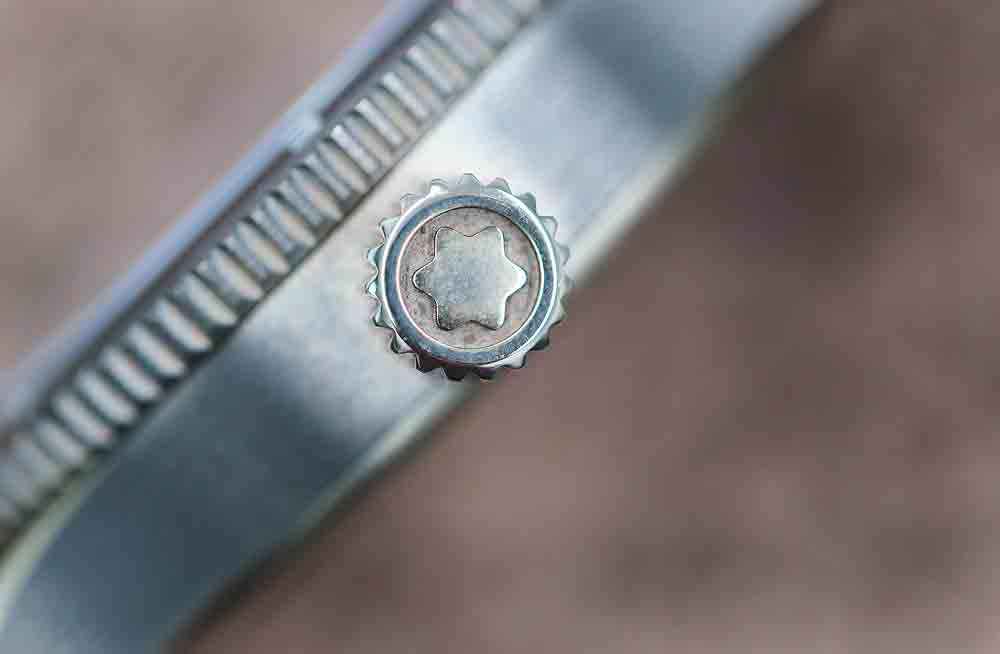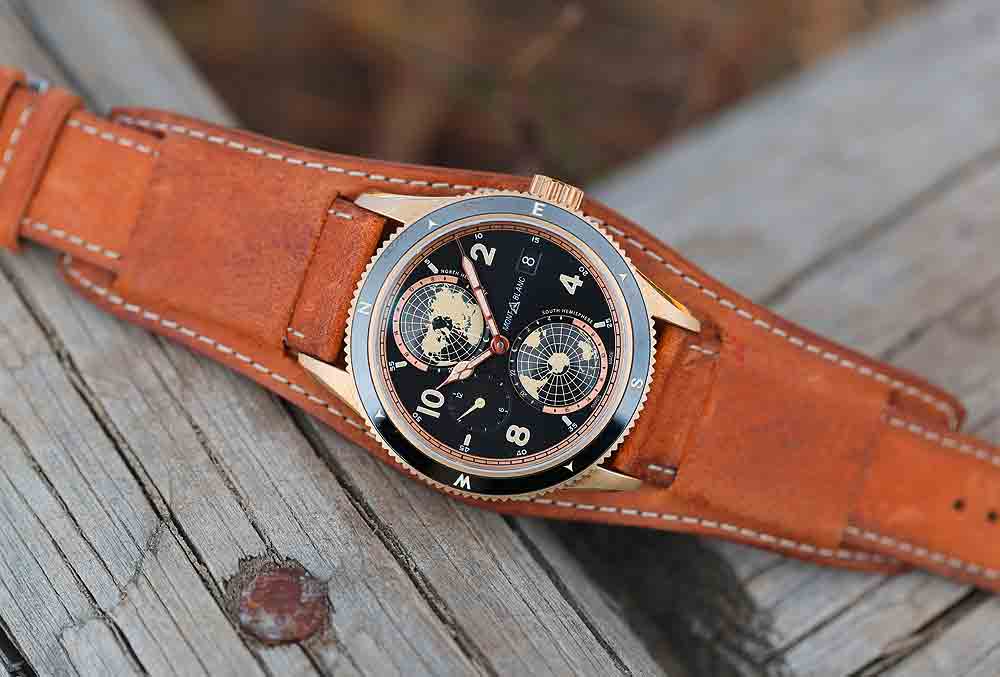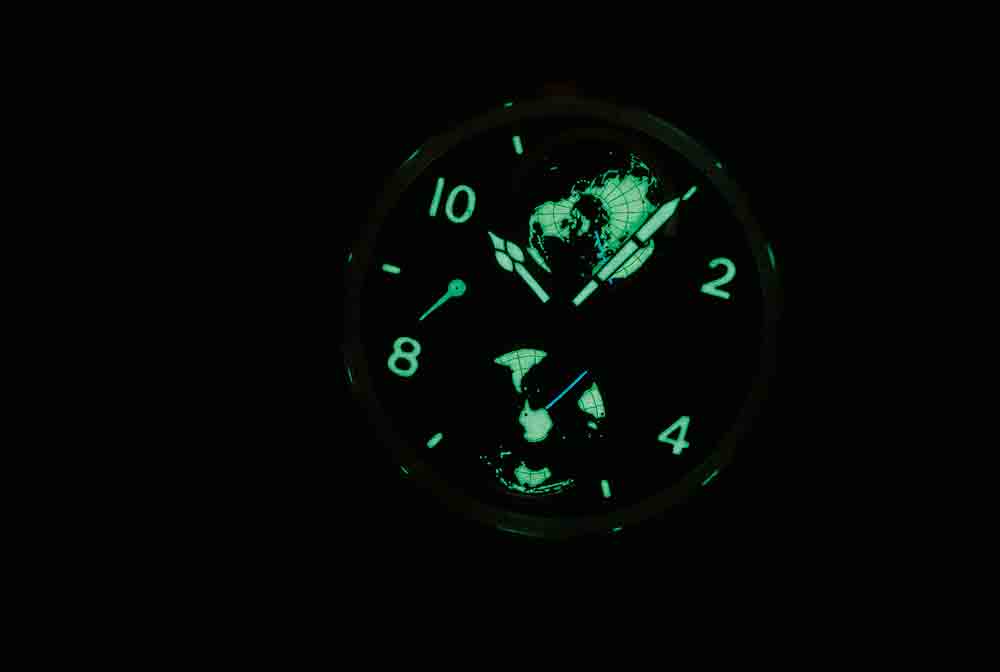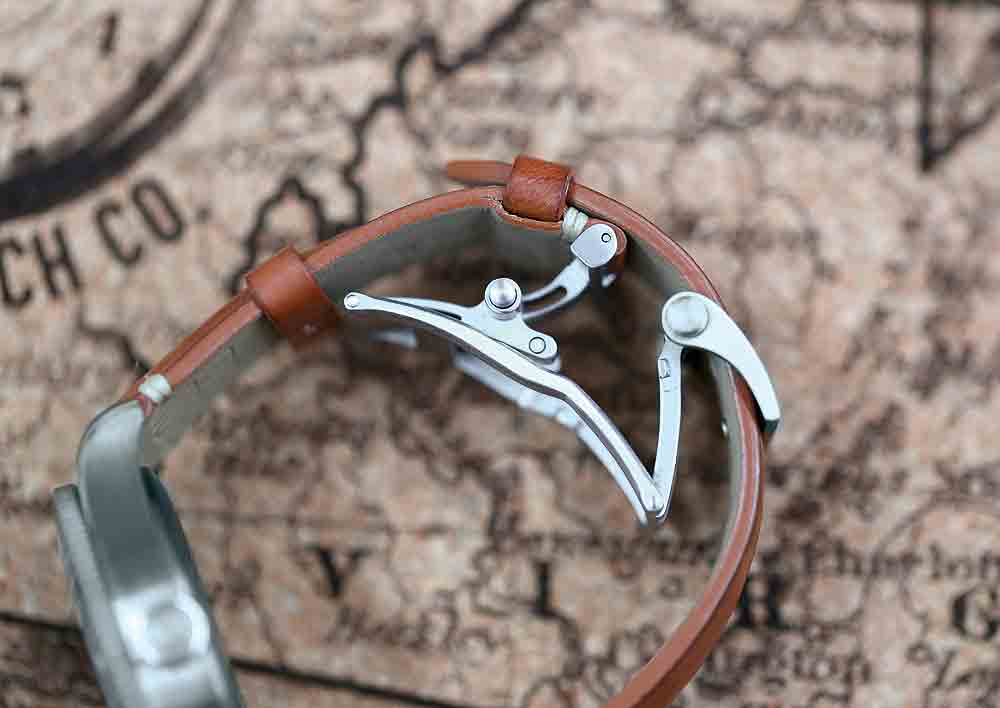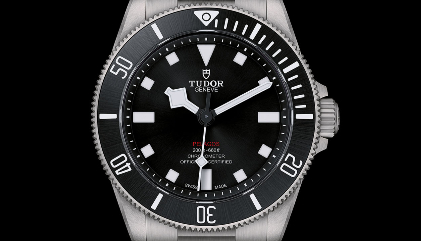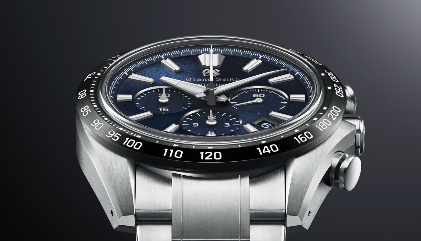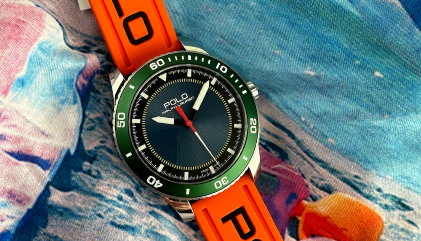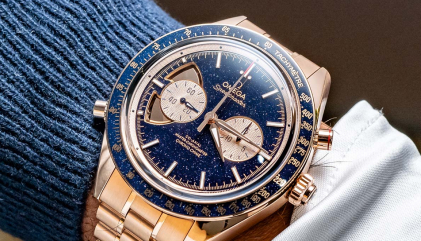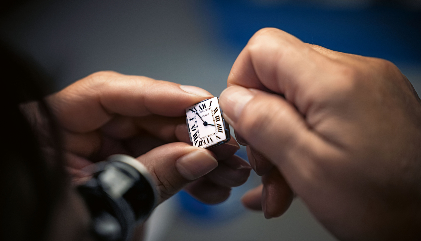In January 2018, Montblanc set out to conquer new peaks: the revamped 1858 collection not only celebrates the spirit of mountain exploration, but also the 160th anniversary of Minerva. We take a closer look at one of the collection’s highlights, the 1858 Geosphere with a new world-time complication.
Montblanc’s Most Essential Watch Collection
The 1906-founded company started to use the name “Montblanc” in 1910 and logo of the white stylised six-pointed snowcap with rounded edges from 1913 on. Both the logo and the company’s name represent the Mont Blanc (meaning “White Mountain”), the highest mountain in the Alps. It rises 15,777 feet above sea level and is ranked 11th in the world in topographic prominence.
The first recorded ascent of Mont Blanc was completed on August 8, 1786, by Savoyard mountain guide Jacques Balmat (1762 -1834) and doctor
and alpinist Michel Gabriel Paccard (1757 -1827). The expedition was later described by English Himalayan mountaineer Eric Earle Shipton (1907 – 1977) as “an astounding achievement of courage and determination, one of the greatest in the annals of mountaineering” and is often regarded as the start of modern mountaineering. In other words, Davide Cerrato, Managing Director of Montblanc’s Watch Division, and his team couldn’t have picked a more fitting theme for the revamped 1858 collection than mountaineering.
WatchTime had the opportunity to test the Automatic Chronograph (Ref. 117835) for the October 2018 issue. The Geosphere, however, turned out to be one of the brand’s highlight releases from last year’s Salon International de la Haute Horlogerie Genève (SIHH). The watch instantly brought a new look, theme and complication to the watchmaker’s base camp.
Peak Performance
The 42-mm watch is dedicated to the Seven Summits Challenge, the holy grail of climbers (so far, fewer than 500 climbers have managed to reach the highest peak on each continent), and features a new world-time complication developed by Montblanc’s watchmakers in Villeret, Switzerland: two domed globes that complete a full rotation in 24 hours as they turn in opposite directions. Montblanc offers two versions of the watch, a non-limited version in stainless steel and a limited edition in bronze (note: most of the pictures of the bronze version already show a bit of patina on the case) with prices starting at $5,600 or Rs. 3.9 lakh (approx.). Nicolas Baretzki, CEO of Montblanc, said, “We want to bring fine watchmaking with content, with a lot of character, but also at a price point which is more of an entry price point, to the fine watchmaking world.”
A similar time-zone indication had already debuted in 2015 in Montblanc’s much more complicated and expensive Ref. 111676, the Villeret Tourbillon Cylindrique Geosphères Vasco da Gama. For the 1858 Geosphere, Montblanc had to develop a new module for the MB 24.09 automatic calibre (based on the Sellita SW300-1), which is now listed as the MB 29.25. With the additional second time-zone indicator at 9 o’clock, the Geosphere not only becomes an ideal companion for travellers, it also offers a new take on the design of a world-timer and a refreshing new theme in general. The only obvious downside: displaying every time zone simultaneously has led to a rather busy dial, which is potentially harder to decipher, and the watch does not come with a seconds hand, presumably to not make the dial any more cluttered.
Minerva’s 160th Anniversary
The 1858 collection itself pays tribute to the year in which Charles Ivan and Hyppolite Robert began doing business in Villeret, Switzerland. Their watchmaking workshop started by assembling movements and registered the Minerva brand name in 1887 (the company was renamed “Minerva SA, Villeret” in 1929). Minerva became renowned for its precision chronograph movements (like the 19/9CH chronograph movement from 1908) and, of course, the famous manual-wind Pythagore Calibre 48 from 1948.
Minerva was acquired by Richemont in 2006 and transformed into the “Institut Minerva de Recherche en Haute Horlogerie” in Villeret. With the Montblanc Manufacture already in Villeret, Montblanc was able to take its watchmaking expertise to a whole new level. The vintage-styled 1858 collection was first introduced in 2016 and awarded in the same year with a Grand Prix d’Horlogerie de Genève in the Chronograph category for the first re-edition of the monopusher chronograph.
How the Geosphere Works
Montblanc has fitted the 1858 Geosphere with an in-house world-time complication with two turning domed hemisphere globes on the dial side, both making a full rotation in 24 hours. The Northern Hemisphere at 12 o’clock turns counterclockwise, while the Southern Hemisphere turns clockwise. Each globe is surrounded by a scale with the 24 time zones, along with a day/night indication in contrasting colours (black
representing night and bronze, day). The IERS Reference Meridian (IRM) is shown with a white line on both globes (even easier to see in the dark). The small red dots on the hemispheres represent the world’s Seven Summits, the highest mountains on the seven continents. The ratcheting bidirectional bezel can be used for navigation during daylight. The subdial at 9 o’clock can be used to track an additional time zone: the hand can be set independently in one-hour jumps clockwise by pushing the small pin-sized corrector pusher at the 10 o’clock position on the side of the case.
The crown can be pulled out in two steps. The first position allows the wearer to move the hour hand independently in one-hour jumps (and is therefore also used to set the date); the second position operates all indications fully synchronised. To set the watch, the two hemispheres and the correct minute need to be set with the crown fully pulled out first, then the local date (with the crown pushed back in one stop) and then the time can be set.
An Expedition Back in Time
Montblanc is not the first watch brand to pick bronze as a case material for one of its watches, and it will certainly not be the last manufacturer to benefit from the metal’s transformative properties and the unique vintage look it offers. A bronze watch develops a distinctive, aged, vintage-look patina over the course of its wearing life that can vary significantly from one watch model to the next, depending on the owner’s behaviour and the alloy composition used. In other words, the Geosphere offers true individualisation over time, and most of the pictures used for this review already show a darker patina on the case. The solid caseback, however, is not made of bronze, but of titanium with a bronze-coloured PVD treatment, since bronze should not be worn on bare skin (which also means that the caseback will not change its colour over time).
In combination with the black ceramic bezel inlay, the vintage hands and the Montblanc logo, the beige lume and the textured globes on the dial, the Geosphere manages to look equally good on a hike and in the office. As an alternative, Montblanc offers the watch in stainless steel for those who prefer a slightly less adventurous look. Both versions are water resistant to 100 meters, even with no screw-down crown and what appears to be a snap-on caseback (resulting in a perfectly aligned caseback design).
In short, the 1858 Geosphere from Montblanc is an interesting option for anyone with the wanderlust gene. The module used for the automatic movement is an innovative and convenient new in-house development from Montblanc, and the intuitive dual-globe layout cannot be found anywhere else. It may not offer the best legibility on first sight, but undoubtedly adds a lot of personality and presence to the wrist, especially when the bronze case starts to age. As a mechanical travel watch with a unique look, the Geosphere is both versatile and comparatively affordable, and at the same time surprisingly easy to operate. It does not come with a seconds hand, but the additional time zone at 9 o’clock is a more-than-welcome addition.
In other words, the Geosphere offers everything one would expect from a seasoned world traveler and is sure to provide a lot of pre-trip happiness.
| Montblanc 1858 Geosphere | |
|---|---|
| MANUFACTURE | Montblanc, Chemin des Tourelles 10, 2400 Le Locle, Switzerland |
| REFERENCE NUMBER | Hours, minutes, date, display of 24 time zones with day and night indicator in contrasting colours, 12-hour dsplay at 9 o'clock, bidirectional bezel with compass ring |
| FUNCTIONS | Hours, minutes, date, display of 24 time zones with day and night indicator in contrasting colours, 12-hour dsplay at 9 o'clock, bidirectional bezel with compass ring |
| MOVEMENT | Calibre MB 29.25 (based on the Sellita SW300-1 and fitted with an in-house module), automatic, 26 jewels, 28,800 vph (4 Hz), 42-hour power reserve |
| CASE | Bronze case and cown, bronze bezel with ceramic insert with engraved compass indication, domed sapphire crystal with double anti-reflective coating, titanium casback, water resistant to 100m |
| STRAP AND CLASP | Cognac-coloured calfskin with beige stitching from the Montblanc Pelleteria in Florence, Italy, stainless-steel folding clasp with micro-adjustment |
| DIMENSIONS | Diameter = 42mm with bezel (case is 41.5mm), height = 12.8mm |
| VARIATIONS | With bronze case and Bund-style leather strap (Ref. 117840, $6,300 or Rs. 4.40 lakh approx.); with stainless-steel case and leather strap (Ref. 119286, $5,600 or Rs. 3.90 lakh approx.); with stainless-steel and NATO textile strap (Ref. 117837, $5,600 or Rs. 3.90 lakh approx.); with stainless-steel case and Bund-style leather strap (Ref. 117838, $5,600 or Rs. 3.90 lakh approx.); Limited edition of 1,858 total pieces,split with Ref. 117840 with Bund-style leather strap |
| PRICE | $6,300 or Rs. 4.40 lakh (approx.). |





